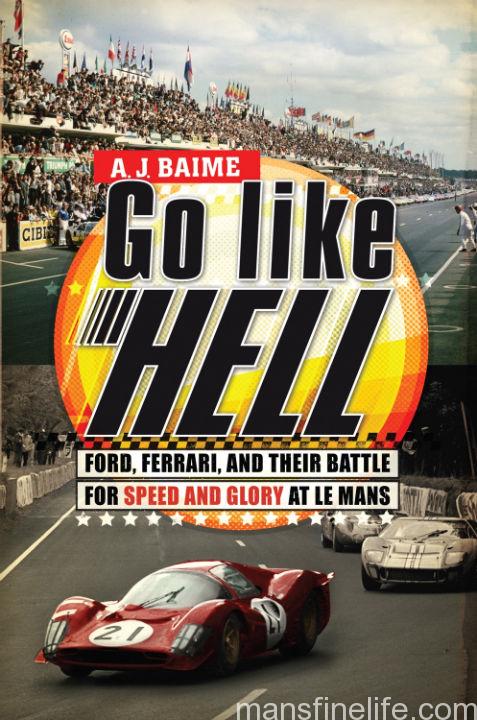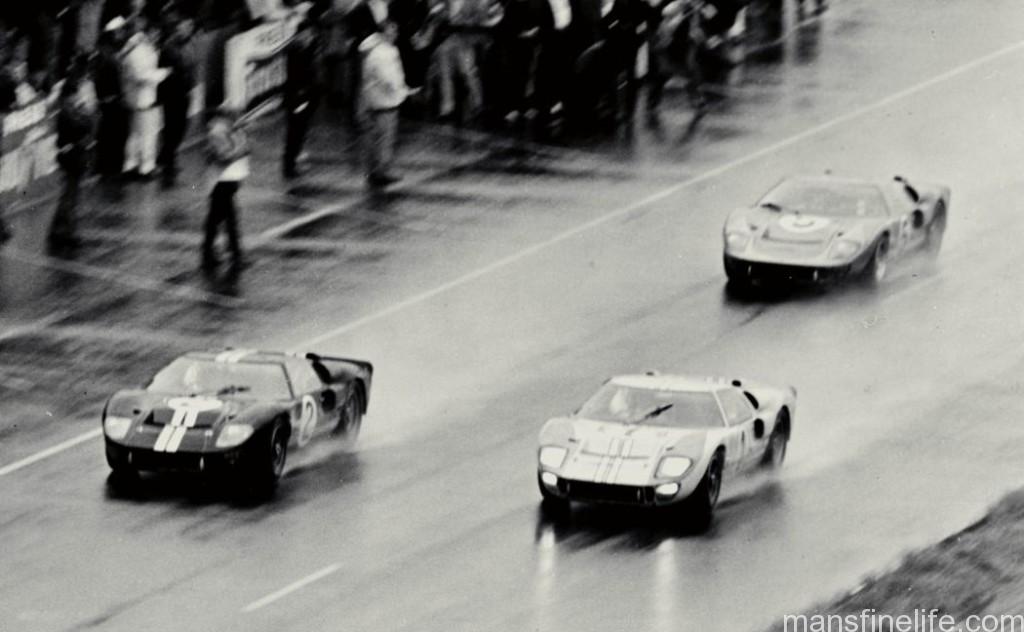The winter interregnum between the end of the major motorsport championships in Europe and America and the new seasons’ spring starts provides the perfect opportunity to catch up with some quality literature on the fine art of racing, the better to whet one’s appetite for the coming competitions of the new year. One of the more enjoyable reads a petrolhead can peruse is A.J. Baime’s excellent Go Like Hell, a terrific account of the epic 1960s Ferrari-Ford rivalry.
The subtitle of Go Like Hell pretty much sums it up: “Ford, Ferrari and their battle for Speed and Glory at Le Mans”. The 1960s saw Ford go all out to try to take down Ferrari from their perch at the very pinnacle of international racing. Nowhere was that mission more ambitious than in the Blue Oval’s quest to somehow, someway win the greatest racing event in the world, the 24-Hours of Le Mans. It would be no easy task, as the Prancing Horse essentially considered the top of the podium in that epic 24-hour race their exclusive piece of prized real estate and Ford, despite their success in NASCAR, really had no international road racing experience at that time.
But they did have Carroll Shelby and a host of other 60s superstars. After winning the 1959 Le Mans in an Astin-Martin, Shelby had turned constructor and converted an underpowered British roadster into the all-world Shelby AC Cobra by dropping a big Ford 427 engine into that light chassis. Just like that, Shelby and his team of talented engineers and fabricators had created a giant slayer. Originally designed as a Corvette killer, the AC Cobra also turned out to be a Ferrari killer in its class. Shelby’s remarkable creation earned the GT class win and 4th overall at the 1964 24-Hours of Le Mans, beating out several Ferrari 250 GTOs for that illustrious honor. After coming to the conclusion that Shelby was simply superior at preparing a road racing car than their NASACR partners, Holman Moody, it was no surprise that Ford chose Carroll Shelby to spearhead the development of their new prototype, the legendary Ford GT 40, with all the resources of Ford’s factory backing at his disposal. That amazing car would go on to win Le Mans overall for a stunning four consecutive years, 1966-1969, including the amazing 1-2-3 finish in 1966.
But Shelby isn’t the only compelling character chronicled in Go Like Hell. There’s a who’s who of hall of fame drivers like Phil Hill, the former Formula 1 Champion for Ferrari who lends his wealth of experience to the new Ford team, Dan Gurney, Lloyd Ruby, A.J. Foyt, the peerless Mario Andretti and the lost legend who may well have been the best driver you’ve never heard of, Englishman and development driver extraordinaire, Ken Miles. There’s a young Lee Iacocca, displaying the qualities of vision and leadership that would make him one of the most successful auto executives in the world in the years to come. And of course there are the dueling factory owners with their titanic egos and shared drive to win. Enzo Ferrari, whom the Italian press dubbed Saturn for the unfortunate penchant of his drivers — his surrogate “sons” — to be devoured by machines of his own creation. And Henry Ford II, known as “The Deuce” for obvious reasons, whose desire to beat Ferrari sprang not only from a proposed merger gone bad between the Detroit powerhouse and the de facto Italian national marque from Maranello, but also from a son’s need to pay tribute to his ill-treated and prematurely deceased father, the unfortunate Edsel Ford, whom Ford founder Henry Senior had humiliated and belittled.
Rumored to be in the works as a film under the direction of Michael Mann, Go Like Hell is indeed a cinematic concoction and a thoroughly enjoyable one. Baime’s meticulously researched page turner captures what many consider racing’s finest era almost perfectly, when lighter cars and higher horsepower broke speed records at a blistering clip and technological advancements changed the game nearly month to month. It also bears witness to the extreme danger of competing in that era, where several drivers might lose their lives in a season and mechanical failure at a place like Le Mans could well spell death not only for the driver but for scores of spectators, as well. You can practically smell the castor oil, hear the roar of the engines as they tear out of the pits and down the Mulsanne Straight at 200 miles per hour and feel your pulse pound as you wonder which cars can survive that most treacherous of 24-hours in a normally peaceful French countryside gone berserk with noise, action and teeming humanity. Read it and enjoy it for yourself. If Go Like Hell doesn’t get your juices flowing and primed for another grand season of motorsport you better just stick to baseball.



